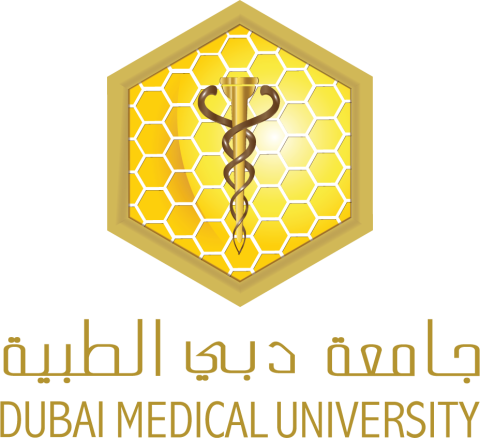
Tips for implementing blended learning in medical education in a post-pandemic world
Blended learning, which combines traditional in-person instruction with online learning, became indispensable for education during the Covid-19 lockdowns – especially in disciplines that require practical experience. These days, it’s a crucial strategy for maintaining the quality of medical education. To truly benefit from it, we need to implement creative and sustainable methods, drawing on the technological advancements at our fingertips.
How to innovate in blended learning
Augmented reality and virtual simulations can offer immersive learning environments that closely resemble actual situations.
- Students can practise procedures, make clinical decisions and gain knowledge and skills from their mistakes in a risk-free setting by using virtual simulations.
- Students can study human anatomy in detail using virtual anatomy apps and virtual dissection labs, for example.
- Students’ clinical and communication skills can be developed by using these resources to mimic patient interactions.
- Our medical schools can offer a flexible and sustainable alternative to the limitations of hands-on instruction by investing in these technologies and regularly updating the simulation situations.
Adaptive learning is considered one of the most helpful techniques in medical education, since the quantity and complexity of information required can differ greatly among students. These platforms can evaluate students’ strengths and weaknesses and offer specialised guidance that meets their individual needs.
- An adaptive learning system may, for example, offer a student struggling with pharmacology extra resources and practice questions, while allowing them to go on to more advanced topics.
- All students will advance at their own pace and receive the assistance they require to grasp difficult subjects.
- So, we can first provide some adaptive learning applications that evaluate the students, and provide quizzes with suitable questions for their level and customised feedback from the instructors. This can be done online.
Even in situations where students are separated geographically, peer-to-peer learning and group projects can be facilitated by online collaborative platforms including discussion boards, shared documents and video conferencing capabilities.
- These platforms were essential for preserving the social and interactive features of learning throughout the pandemic. To create a seamless learning environment, medical schools can incorporate these capabilities into their learning management systems.
- Teachers should be trained in creating meaningful interactions among students and fostering collaborative online settings.
- Many educational programmes now introduce these features for their online students. For those in medicine particularly, it can improve their outcomes.
- These features can also be used to transfer knowledge between different institutions.
The pandemic brought attention to how important professional skills and digital literacy are in the medical sector. Using blended learning to incorporate these competencies into the curriculum is a good idea.
- Teachers can create activities that support digital literacy by having students conduct online literature searches for medical topics, assess digital sources and use a variety of software programs for data analysis and patient management.
- Adding telemedicine, digital health and electronic health record classes might help students get ready for how the medical field is changing.
- Substituting printed materials with digital resources and textbooks can promote sustainability. Encouragement of the usage of open-access educational resources can also provide high-quality content at a lower cost and environmental impact.
Encouraging teachers’ ongoing professional development
The skills and knowledge of educators are critical to the success of blended learning in medical education. Programmes for continuous professional development are crucial for providing teachers with the skills and resources they need to successfully incorporate technology into their lesson plans.
- CPD programmes can include a range of blended learning topics, including instructional design, digital tools and student engagement tactics. They can also involve peer mentorship, online courses and seminars.
- Promoting a culture of continuous learning among educators guarantees their adaptability and their ability to use novel technology and approaches to improve the educational process.
Blended learning in medical education can be advanced with the help of game-based learning. Games offer a dynamic and interesting approach to imparting clinical skills and difficult concepts.
- Students can practise medical procedures, make clinical decisions and learn from their mistakes in a risk-free setting by using role-playing games and simulations.
- Additionally, gamified learning systems can provide tailored feedback, monitor progress and adjust to each learner’s unique learning requirements.
- Our medical schools can increase student motivation, strengthen knowledge retention and create a dynamic, cutting-edge learning environment that closes the knowledge gap between theory and practice by implementing gaming into the curriculum.
The Covid-19 pandemic showed the urgent need for innovative and sustainable strategies in medical education. By incorporating virtual simulations, adaptive learning platforms, collaborative online tools and telemedicine training, medical schools can significantly enhance the blended learning experience.
- Learning objectives as a tool to guide post-Covid learning
- Supporting students with Covid-related anxiety when teaching online
- How Mozart and the arts can help students feel less awkward
Supporting continuous professional development for educators and promoting inclusivity and accessibility further bolster the blended learning model. Embracing these approaches allows medical education to thrive, even during crises, and effectively prepares the next generation of healthcare professionals for future challenges.
To enhance blended learning in medical education, consider the following:
- Integrate augmented reality and virtual simulations to provide realistic training scenarios
- Enable students to practice procedures, make clinical decisions and learn from mistakes in a risk-free environment
- Use virtual anatomy apps and dissection labs for detailed study of human anatomy
- Develop clinical and communication skills by simulating patient interactions
- Use platforms that evaluate students’ strengths and weaknesses, offering tailored guidance
- Employ tools such as discussion boards, shared documents and video conferencing to facilitate peer-to-peer learning and group projects
- Incorporate activities that enhance digital literacy and professional skills into the curriculum
- Include classes on telemedicine, digital health and electronic health records to prepare students for modern medical practices
- Replace printed materials with digital resources and textbooks
- Encourage the use of open-access educational resources to reduce costs and environmental impact
- Provide continuous professional development programmes to equip educators with skills and resources to integrate technology effectively
- Use games and simulations to teach clinical skills and complex concepts dynamically
Rania Shalaby is associate professor of biomedical science at Dubai Medical College for Girls.
If you would like advice and insight from academics and university staff delivered direct to your inbox each week, sign up for the Campus newsletter.




